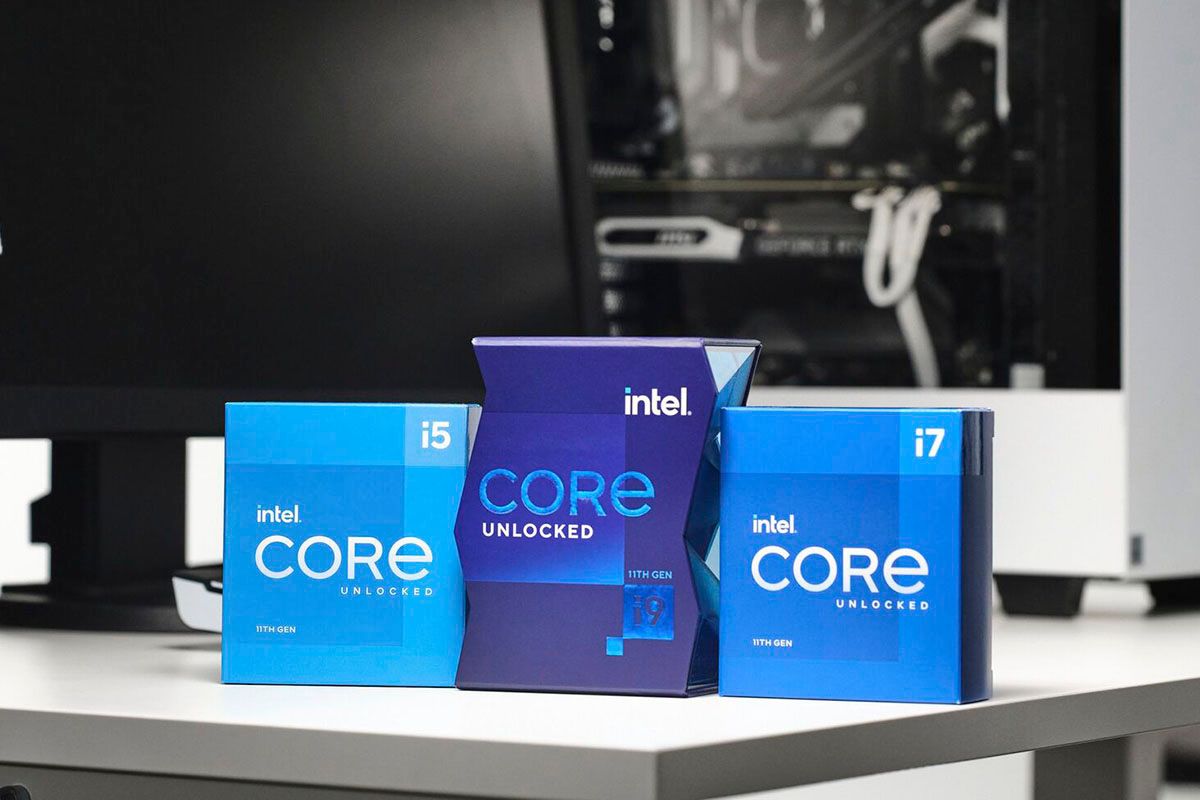Intel has finally opened the curtains for its next generation of desktop processors. The company’s new 11th generation Rocket Lake-S desktop chip series is a continuation of last year’s 10th generation Comet Lake CPUs. It continues to use the 14nm architecture, which is probably the biggest disappointment in Intel’s new CPU range. The second disappointment is that due to the limitations of the 14 nm process node, this year, the top-of-the-line Core i9 processor will have 8 cores, which is a downgrade from the Core i9-10900K that came with 10 cores.
Despite using the same node for almost half a decade, Intel managed to extract every bit of performance. He claims he can marginally outperform the new Ryzen 5000 series desktop processors and, of course, there are some other updates, including support for PCIe 4, USB 3.2 2 × 2 (20G), an increase in IPC (instruction per cycle / clock) 19% and more. Intel has adapted two of its technologies to the new Rocket Lake chips. This includes the Sunny Cove core of the 10 nm Ice Lake mobile chips that were rebuilt at 14 nm and renamed Cypress Cove.

The new processors also come with new Intel UHD graphics based on the Iris Xe graphics seen last year with the introduction of the 11th generation Tiger Lake processors based on 10nm for laptops. The new graphics are claimed to offer 50% better integrated graphics performance. Rocket Lake-S processors also come with a new memory controller capable of supporting up to 3200 MHz of DDR4 RAM.
Intel is finally opening up in front of the PCIe, offering 20-way access to the CPU for increased bandwidth. The new processors will continue to offer high clock speeds, led by the new Core i9-11900K, with a capacity of up to 5.3 GHz. Notably, almost all of the improvements mentioned above will apply to the Core i9, Core i7 and Core i5 models , as the Core i3, Pentium and Celeron chips will continue to follow the same Comet Lake (Skylake) architecture.
The new 11th generation desktop processors will also come with new overclocking tools, including real-time memory overclocking, which allows changes to the DDR4 frequency in real time without the need to restart the system. Support for memory overclocking is also being extended to the H570 and B560 chipsets for the first time. Intel will also offer support for scalable BAR, allowing users to enable all GPU memory to be accessed by the CPU at once. The new processors also add support for enhanced media, including 10-bit AV1 and 12-bit high-efficiency video encoding (HEVC) decoding and end-to-end compression, HDMI 2.0, HRB3, Thunderbolt 4 and Intel Wi-Fi 6E Support, Support.
Intel shared some performance parameters where it claims that the 11th generation Core i9-11900K is capable of offering gaming performance up to 11% better than the AMD Ryzen 5900X. Compared to its own 10th generation Core i9-10900K, the new chipset can deliver up to 14% better gaming performance. For those who don’t want to spend a lot of money on a high-end chip, the 11th generation Core i5-11600K also offers a decent increase of up to 16% improvement compared to the 10th generation Core i5 10600K.
A new series of desktop processors also means new mobos. Intel gave us some tips on the new 500 series motherboards, which have been on the market since January. The new Z590 should be your choice if you are looking for all the cutting edge features, while the H570 and B560 cards will be in the background, but offer equally good options at a lower price. The new 500 series will support the new 11th generation processors, while the 10th generation desktop processors will also be compatible thanks to the LGA1200 socket. The new 500 series will offer support for USB 3.2 2 × 2 for speeds of 20 Gbps, support for memory overclocking on the H570 and B560, support for 20 PCIe Gen 4 lanes and discrete Wi-Fi 6E and Thunderbolt 4.
Prices start at $ 182 for the Core i5-11400T, going up to $ 539 for the Core i9-11900K. The Core i3 and Pentium processor options will continue to be nicknamed 10th generation with minor upgrades with prices ranging from $ 84 for the basic Pentium Gold G6405T to $ 154 for the Core i3-10325. Intel’s 11th generation desktop processors are now available.
